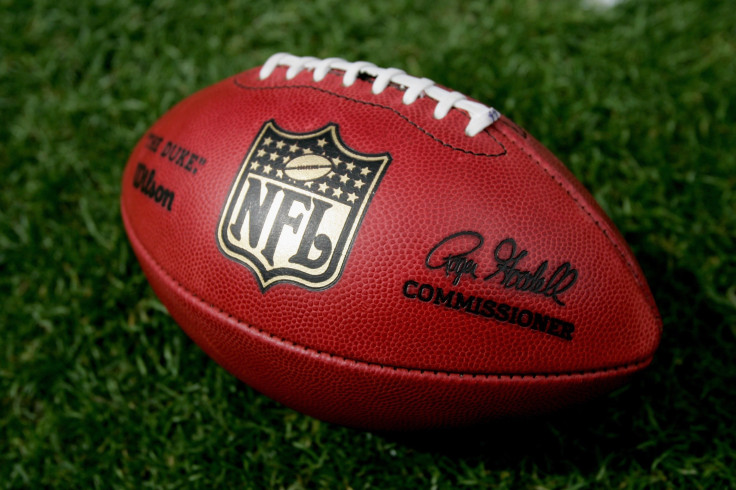Tom Brady Deflategate Punishment? Sports Leagues Discipline Equipment-Tampering With Fines, Suspensions

If NFL-hired investigator Ted Wells’ Deflategate report was accurate and New England Patriots quarterback Tom Brady was indeed “at least generally aware” that team employees purposely deflated AFC championship game footballs, sports fans shouldn’t be surprised. Professional athletes have a storied history of doctoring game equipment to gain a competitive advantage, and sports leagues have a similar track record of meting out discipline to ensure the “integrity of the game.”
A team led by Wells released a 243-page report Wednesday, the culmination of a four-month investigation that kicked off when Indianapolis Colts alerted league officials to suspicions that the Patriots purposely deflated game balls to allow Brady a better grip in the Jan. 18 game’s inclement weather, ESPN reported. Investigators interviewed the involved parties, examined text messages exchanged between Patriots personnel and ultimately determined it was “more probable than not” that staffers Jim McNally and John Jastremski deliberately deflated the footballs.
Patriots owner Robert Kraft and Brady’s agent Don Yee each condemned the report’s findings in damning statements, and NFL officials are already considering potential punishments for Brady, McNally and Jastremski, a source within the investigation told ESPN’s Adam Schefter. It’s unclear what the punishments would entail or if they will ever occur, but recent history suggests Brady won’t emerge from Deflategate unscathed. In the past, similar tampering in other sports prompted fines and suspensions for the guilty party, but rarely resulted in significant missed time.
Here's how three major sports leagues have dealt with such situations:
National Football League
Brady’s apparent violation directly affected equipment used in a playoff game, an offense that NFL Commissioner Roger Goodell has not publicly encountered since he assumed his office in 2006.
Still, league officials tend to come down hard on those who violate the “integrity of the game,” former NFL general manager and competition committee member Bill Polian told USA Today. The NFL suspended Atlanta Falcons President Rich McKay from the league’s competition committee in March after it found the team pumped in artificial crowd noise during its home games last season, and barred Cleveland Browns general manager Ray Farmer for four games after it found he illegally texted team personnel on the sideline during games, he noted.
New Orleans Saints head coach Sean Payton received a yearlong suspension in the 2012 “Bountygate” scandal after league investigators determined he tried to cover up the team’s practice of offering cash payouts for hard hits on opposing players. And Patriots head coach Bill Belichick was fined $500,000 and stripped of draft picks in 2007 when league officials found the franchise spied on opposing teams’ defensive signals.
The NFL has rarely dealt with deliberate equipment tampering, but it did ban players in 1981 from using an adhesive substance known as “Stickum” on their gloves to make it easier to catch the football. But that didn’t stop players from regularly using the substance to gain an advantage, Hall of Fame wide receiver Jerry Rice said last February. League officials fined the San Diego Chargers $20,000 in 2012 for failing to hand over towels purportedly covered in “Stickum” to game referees, but ultimately determined no wrongdoing took place, Reuters reported.
Major League Baseball
Doctored balls are such a routine occurrence in baseball that they’re often met with little more than a slap on the wrist. It’s a poorly kept secret that pitchers often use pine tar or suntan lotion to get a better grip of the baseball. Batters tend not to mind, as it helps to prevent wild pitches, but league rules prohibit the use of foreign substances. Other pitchers have doctored the ball through more dubious means, such as with sandpaper or spit, to affect a pitch’s movement through the air. So-called “spitballs” have been banned since 1920.
Joe Niekro, a knuckleball pitcher who won 221 games during his 22 years in professional baseball, was suspended 10 games in 1987 after umpires found sandpaper in his pocket. More recently, New York Yankees pitcher Michael Pineda received a 10-game suspension after umpires spotted pine tar on his neck. Former Boston Red Sox ace Jon Lester earned widespread scorn in 2013 after video appeared to reveal a gob of sunscreen in his pitching glove, but he did not receive a suspension.
But equipment-related violations aren’t limited to pitchers. MLB sluggers have been penalized in the past after being found in possession of a “corked bat,” or a bat that has been filled with cork or rubber balls to make it lighter. A lighter bat equals more bat speed, which equals more power. Former Chicago Cubs outfielder Sammy Sosa was banned for eight games in 2003 after he was caught with a corked bat, while former Cleveland Indians slugger Albert Belle earned a seven-game ban for the same offense in 1994.
National Hockey League
Hockey’s most infamous instance of equipment tampering occurred during Game 2 of the 1993 Stanley Cup Final between the Montreal Canadiens and the Los Angeles Kings. Trailing 2-1 in the game’s third period, the Canadiens pointed out to the game’s referees that the curve of Kings defenseman Marty McSorley’s stick exceeded league limits.
McSorley received an unsportsmanlike conduct penalty for the illegal stick and the Canadiens capitalized on the resulting power play to tie the game and, ultimately, to win in overtime. McSorley wasn’t suspended, but the penalty completely turned the series’ momentum. The Canadiens won four straight games to win the Stanley Cup.
Like McSorley, any NHL players caught with illegal sticks receive a two-minute penalty and minor fine. Goalies who use pads that exceed NHL limits are treated more harshly, with a two-game suspension and $25,000 fine, Pro Hockey Talk says.
© Copyright IBTimes 2024. All rights reserved.






















